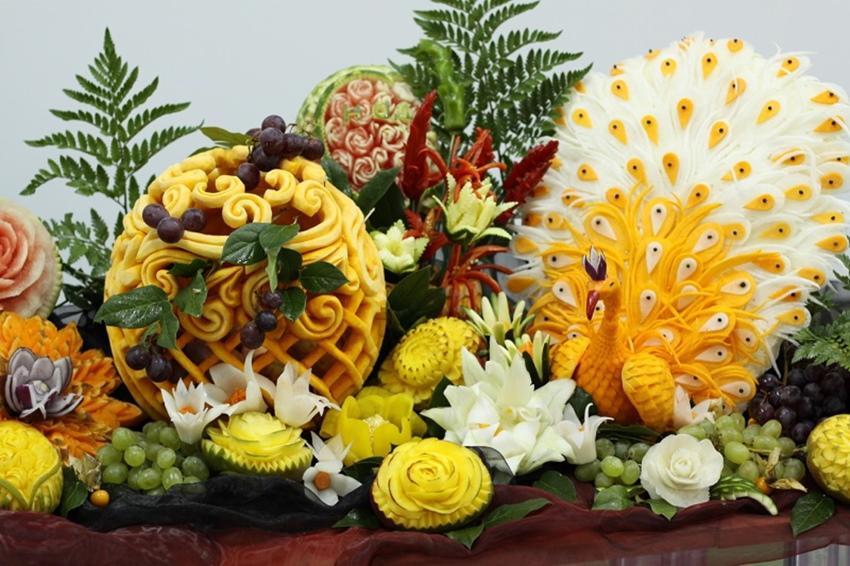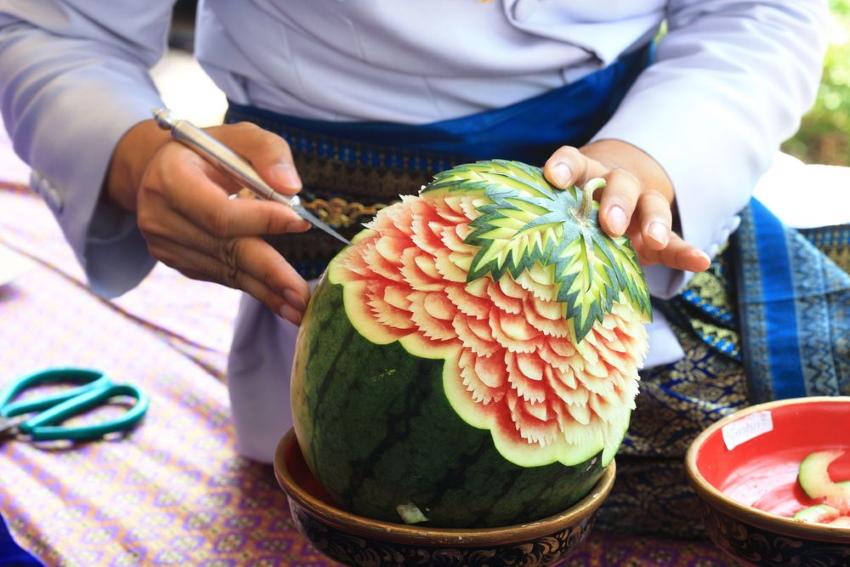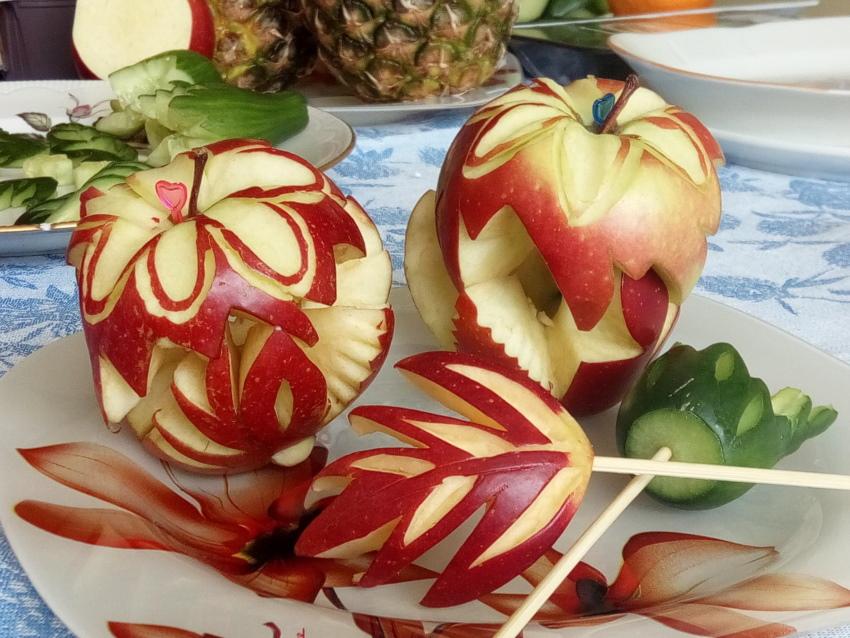What is fruit and vegetable carving - art can be edible
 Restaurateurs know that a beautiful presentation of a dish is half of its success and even a simple puree can be decorated in an original way. For example, "planting" on it a carrot chrysanthemum or a cucumber chamomile. If you still do not know what vegetable and fruit carving is, then now is the time to join the modern culinary art. Yes, precisely to art, because the whole art is hidden under the incomprehensible word. It's just that the canvas in it is replaced by fruits or vegetables, and a sharp knife serves as a brush. With its help, the watermelon turns into a huge gorgeous rose, and the beets into a lush peony.
Restaurateurs know that a beautiful presentation of a dish is half of its success and even a simple puree can be decorated in an original way. For example, "planting" on it a carrot chrysanthemum or a cucumber chamomile. If you still do not know what vegetable and fruit carving is, then now is the time to join the modern culinary art. Yes, precisely to art, because the whole art is hidden under the incomprehensible word. It's just that the canvas in it is replaced by fruits or vegetables, and a sharp knife serves as a brush. With its help, the watermelon turns into a huge gorgeous rose, and the beets into a lush peony.
What is vegetable and fruit carving

 Asia is considered the birthplace of carving, but gradually culinary creativity went beyond its vastness and conquered all of Europe. Different countries even have their own preferences and special cutting techniques. So, the most common are 4 directions:
Asia is considered the birthplace of carving, but gradually culinary creativity went beyond its vastness and conquered all of Europe. Different countries even have their own preferences and special cutting techniques. So, the most common are 4 directions:
- Chinese (stencil drawing);
- Japanese (complex paintings depicting martial arts or hieroglyphs);
- European (it is based on the practical further use of crafts, as well as the predominance of geometry in drawings);
- Thai (presents the most complex compositions that combine many techniques).
Some subtleties of carving for beginners
 You can create a culinary and edible masterpiece from almost any fruit and vegetable. At the same time, there are some recommendations created on the basis of many years of practice of the masters. If you decide to try yourself in artistic cutting, pay attention to the following nuances:
You can create a culinary and edible masterpiece from almost any fruit and vegetable. At the same time, there are some recommendations created on the basis of many years of practice of the masters. If you decide to try yourself in artistic cutting, pay attention to the following nuances:
- Choose hard fruits, you can unripe, otherwise they will not keep their shape.
- It will be easier to cut on an even peel, and the most contrasting pattern will turn out on bright fruits.
- For cutting tomatoes, take plum varieties, carrots and cucumbers are direct fruits. But radish and beets are preferable spherical.
- Cut dense vegetables and fruits warm, after taking them out of the refrigerator, especially watermelon. Soak the carrots in cold water for a couple of hours. Then it won't break.
- You can use a regular kitchen knife as tools, only a sharp one. Useful for carving fruits and scissors, and knives with semicircular cuts or sickle-shaped blade.

Of the vegetables, carrots and radishes, cucumbers and potatoes, beets and onions behave best of all. With regard to fruits, it is worth giving preference to apples and quince, mango and avocado, citrus fruits with a hard peel. But for creating large-scale paintings, watermelons and pumpkin are suitable.
Whatever they say, but it is better to look at such creations once than to read about them a hundred times. Experienced craftsmen create such masterpieces that they simply cannot find words to describe.Sometimes, under a magic picture, you don't know at all what served as its basis.